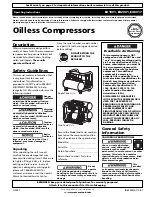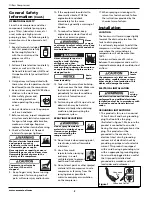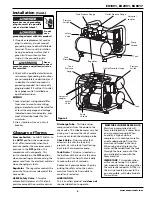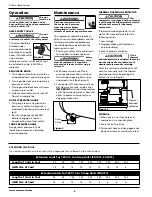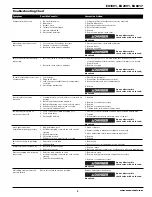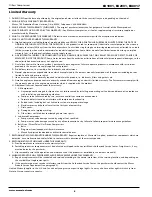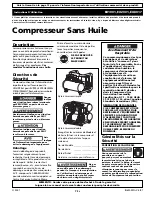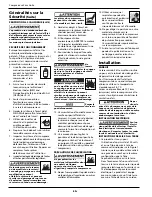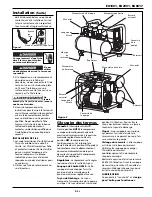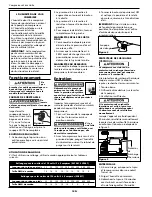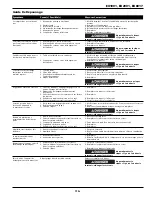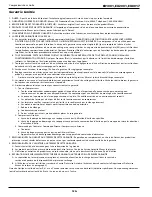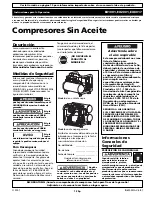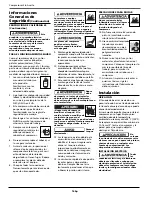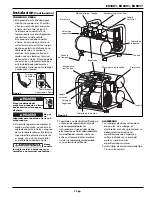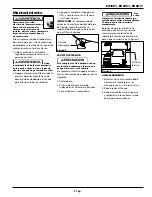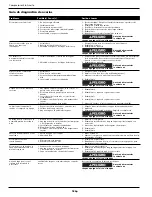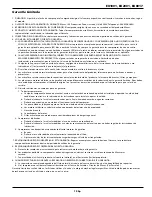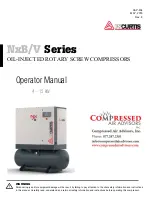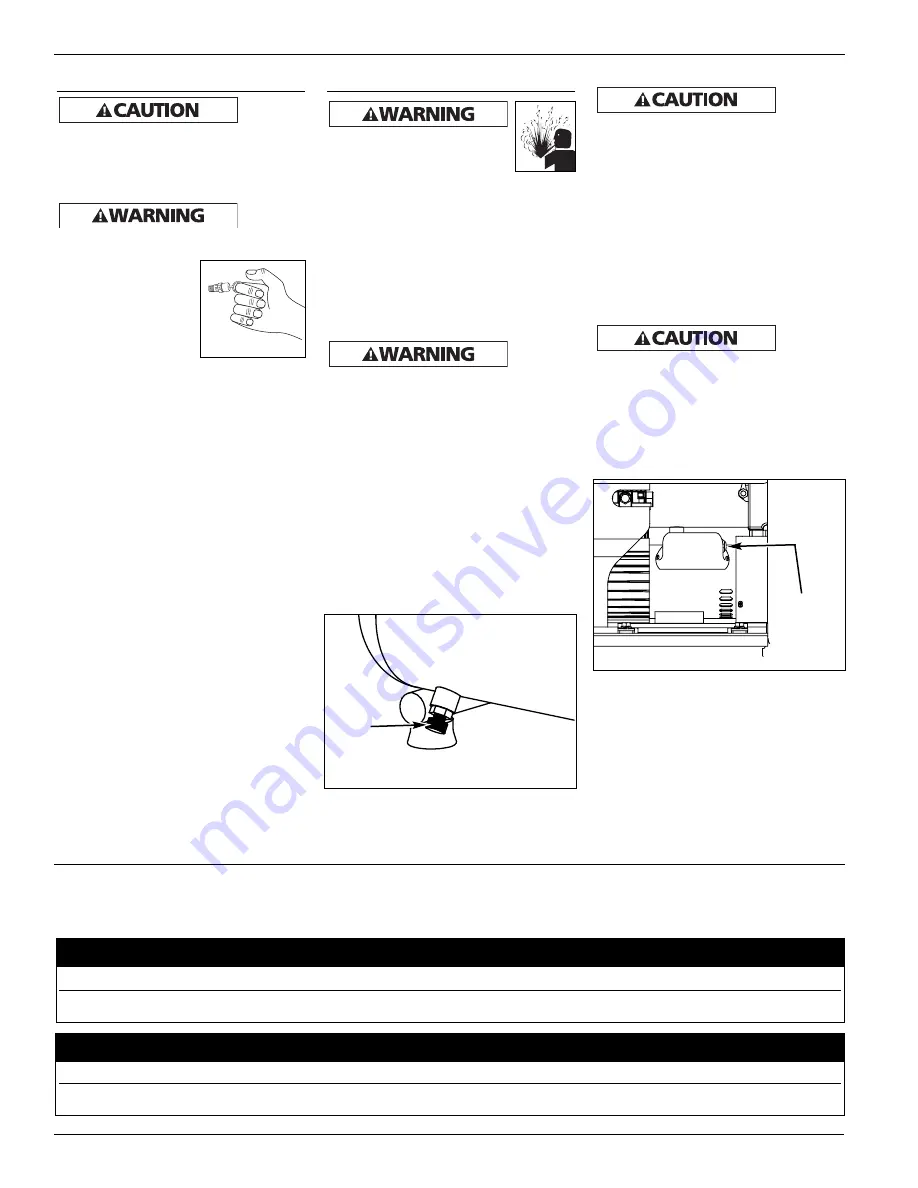
Maintenance
Disconnect power source
then release all pressure
from the system before
attempting to install, service,
relocate or perform any maintenance.
The compressor should be checked
often for any visible problems and the
following maintenance procedures
should be performed each time the
compressor is used.
1. Pull ring on safety valve and allow it
to snap back to normal position.
Safety
valve
must be replaced if it cannot be
actuated or it leaks air after ring is
released.
2. With compressor shut off and
pressure released: Drain moisture
from tank by opening drain valve
underneath tank (See Figure 4).
3. Turn power OFF and clean dust and
dirt from motor, tank, and air lines.
IMPORTANT:
Unit should be located
as far from spraying area as hose will
allow to prevent over-spray from
clogging intake port.
Operation
Do not
attach air
chuck or other tool to open end of
hose until start-up has been completed
and unit checks OK.
ASME SAFETY VALVE
Do not
remove
or attempt to adjust the safety valve!
This valve should be
checked under
pressure occasionally
by pulling the ring by
hand. If air leaks after
ring has been
released, or valve is stuck and cannot
be actuated by ring, it MUST be
replaced.
REGULATOR KNOB
1. This knob controls air pressure to an
air operated tool, or paint spray gun.
2. Turning knob clockwise increases air
pressure at outlet.
3. Turning counterclockwise will lower
air pressure at outlet.
4. Fully counterclockwise will shut off
flow of air completely.
OUTLET PRESSURE GAUGE
1. This gauge shows at-a-glance, air
pressure at outlet. Air pressure is
measured in pounds per square inch
(psi).
2. Be sure this gauge reads ZERO
before changing air tools or
disconnecting hose from outlet.
TANK PRESSURE GAUGE
Gauge shows pressure in tank
indicating compressor is building
pressure properly.
4
Figure 4
THERMAL OVERLOAD PROTECTOR
This
compressor is equipped with an manual
reset thermal overload protector which
will shut off motor if it becomes
overheated.
If thermal overload protector shuts
motor OFF frequently look for the
following causes:
1. Low voltage
2. Clogged intake port (located on
pump crankcase)
3. Lack of proper ventilation
If the
thermal
overload protector is actuated, the motor
must be allowed to cool down for 30
minutes before manually resetting.
After the unit has cooled down for 30
minutes, manually reset the thermal
overload protector by pushing the
button shown in Figure 5.
STORAGE
1. When not in use, store hose and
compressor in a cool, dry place.
2. Drain tank of moisture
3. Disconnect hose and hang open ends
down to allow any moisture to drain.
Drain
Valve
Oilless Compressors
Figure 3
Figure 5
Thermal
overload
protector
EXTENSION CORD USE
If an extension cord has to be used, use the appropriate cord based on the charts below.
www.maxustools.com
Extension cords for 120V / 3 to 4 Amp Units (EX1001, EX2001)
Length of Cord in Feet
25 50 100
150
200
250
300
400
500
AWG Size of Cord
18 18 16
14
12
12
10
10
8
Extension cords for 120V / 6 to 8 Amp Units (EX8017)
Length of Cord in Feet
25 50 100
150
200
250
300
400
500
AWG Size of Cord
18
16
12
10
10
8
6
6
6

